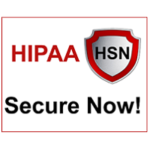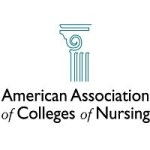Taking a break from who is hiring and who was hired, we rounded up some reading on the state of the healthcare workforce. Like many things in our lives for the past two years the pandemic has taken a toll on it. The healthcare workforce might be on the top of the list of disruption. With 18% of healthcare workers having left their jobs and another 12% being laid off, what are the solutions for healthcare as a whole? You can’t open a paper, magazine, or watch news and not hear about the crisis that has evolved. Here are some insights and reports.
To Listen
From Follow the (Medical) Record, host Don Hardwick interviews Moira Washington, Vice President of Disclosure Management Operations at MRO regarding change management. Specifically they explore managing a remote workforce in a healthcare environment.
In The News
Dwyer Workforce Development (DWD) Closes Monumental $590M Long-Term Healthcare Portfolio Deal That Disrupts the Traditional Approach to Solving Healthcare Workforce Staffing Crisis
The Jack and Nancy Dwyer Workforce Development Center, Inc. (Dwyer Workforce Development or DWD) announced the $590 million acquisition of a Texas-based 50-skilled-nursing-facility portfolio managed by Regency Integrated Health Services (Regency and the Regency Portfolio). The Regency Portfolio has approximately 4,400 employees and serves 4,600 residents. The Regency Portfolio will transition from a for-profit to a not-for-profit organization under the deal. DWD’s mission is to provide comprehensive support to individuals who lack opportunity and aspire to pursue a career in the healthcare industry, alleviate a severe healthcare workforce shortage, and improve the lives of seniors.
Members of Congress Urge CMS to Support States, Temporary Nurse Aides Amidst Historic Long Term Care Workforce Challenges
Recently a bipartisan group of 14 federal lawmakers, led by Congressman Brett Guthrie (R-KY-2), sent a letter to CMS, requesting the agency’s support of H.R. 7744, the Building America’s Healthcare Workforce Act. The legislation would extend the 1135 waiver flexibilities for a period of 24 months upon the end of the COVID-19 public health emergency (PHE) declaration. The American Health Care Association/National Center for Assisted Living (AHCA/NCAL) (@ahcancal) supported the bill when it was introduced earlier this year.
Staffing and Care Have Yet to Recover From COVID
IntelyCare (@IntelyCare), a healthcare workforce management platform in the United States, released the first major study analyzing the long-term impact of the COVID-19 pandemic on nursing home staffing levels and care quality. The IntelyCare Research Group study, based on a survey conducted by Reputation Leaders, found large numbers of caregivers see the repercussions of COVID as severe and long lasting. COVID’s immediate impact on staffing levels was widely reported in the media. Half of all nurses surveyed said staffing was too low during the pandemic, and more than two-thirds (70%) say staffing levels have not improved since then.
To Read
COVID-Related Stress and Work Intentions in a Sample of US Health Care Workers – From the Mayo Clinic Proceedings (@MayoProceedings) – The objective was to evaluate relationships between coronavirus disease 2019 (COVID-19)–related stress and work intentions in a sample of US health care workers. Between July 1 and December 31, 2020, health care workers were surveyed for fear of viral exposure or transmission, COVID-19–related anxiety or depression, work overload, burnout, and intentions to reduce hours or leave their jobs.
3 Pillars of Healthcare Contingent Labor – By Megan Williams, Business Writer for IntelyCare (@IntelyCare) – Per-diem nursing professionals should be anything but a last resort in your staffing strategy. Contingent labor is known as “premium labor” in healthcare for good reason; but the true cost of healthcare contingent labor is often misunderstood. It’s possible to use these nursing professionals strategically—in a way that results in long-term financial benefit and positive outcomes. This perspective is especially important as more nursing professionals are looking for flexible work options—per-diem models have exploded in nursing with 53% more nurses identifying as per diem in 2020 compared to 2015.
Resources
 Staffing Resource Center
Staffing Resource Center
MGMA
Twitter: @MGMA
With physician burnout on the rise and engagement on the decline, it can feel like there’s nothing you can do to combat the staffing shortage impacting the healthcare industry. Check out their list of best resources to help you restore your staffing levels and make it through the twilight of this pandemic. You can do this, and we’re here to help.
 2022 Healthcare Workforce Rescue Package
2022 Healthcare Workforce Rescue Package
All In WellBeing First for Healthcare
Twitter: @AllIn4WellBeing
Two years into a global pandemic, healthcare team members are in crisis. Leaders are bombarded with competing messages about how to support them and address workforce shortages. A group of experts in collaboration with the National Academy of Medicine identified the top five actions leaders should take to support team members now. These evidence-based actions can be initiated within 3 months and build a foundation for a long-term system well-being strategy.
 Remote Workforce and HIPAA
Remote Workforce and HIPAA
Twitter: @HIPAASecureNow
Whether a change in your business structure came about from the pandemic, or it just makes more sense for your team, remote work is the norm for many more professionals today than it was in years past.
If you’re in healthcare, this means that you need to factor in the HIPAA component as well as cybersecurity to protect you, the business, and your patients.

